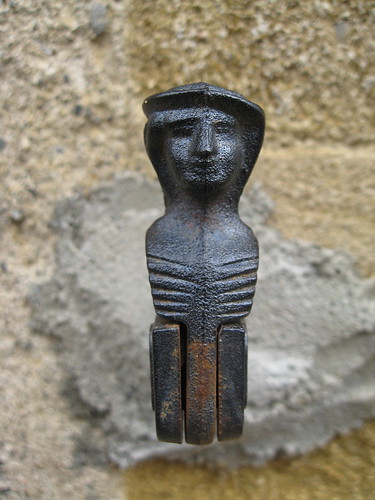I was speaking with a colleague in the Sculpture Department.
"How's the ceramics going?" she asked. I had in my hand some clay I had just prepared, a kind of small figurine, part of an assemblage I thought up over the weekend. We're looking at pretty heavy duty firings over the next few weeks so I'm making these smallish, regularly-shaped pieces to accommodate spaces in the kiln when and where they occur.
Anyway the piece I was holding reminded me of a figurine I saw last summer at the wonderful anthropology museum in Bordeaux.
The Bordeaux sculpture is very old, maybe 30,000 years or older. What about my piece? It's a take on that ancient sculpture. Would you call my piece an abstracted version? Maybe. Or maybe it's an attempt to represent in some realistic way what that figure is. What about the original? Was it an abstract of the artist's idea of what a human figure should look like? Maybe. Or maybe the artist was trying to represent, in the realest way they could, a "real" human figure.
This gets me to the crux of the question, I think. It came up because Kitty was teasing me about criticizing representative work (busts). Well not so much teasing me as trying to explain to me "This is how we teach the students to learn to abstract."
So what's abstract and what's representational? How do we learn to "abstract?" Aren't we abstracting when we make the first crayon drawing of our house and family?
The existential part of the question is, I guess, that humans by our very nature are abstractionists. We take what we perceive, what we "see," and we build it into some representation that must be an abstract. Because we can never make the "real" thing. Take a photograph, as close to "real" as we can get. But it's abstracted through layers and layers of culture, technology, technique, and vision. Certainly the viewer experiences it as an "abstract" because the viewer's interpretation is part of the realization (or abstraction) of the image.



I vaguely remember reading in a book on photography (Susan Sontag's perhaps) where it mentioned that members of a tribe were unable to read photographs and recognise human representations in them. So I guess to some extent the ability to interpret such two-dimensional abstractions is socially constructed.
ReplyDelete